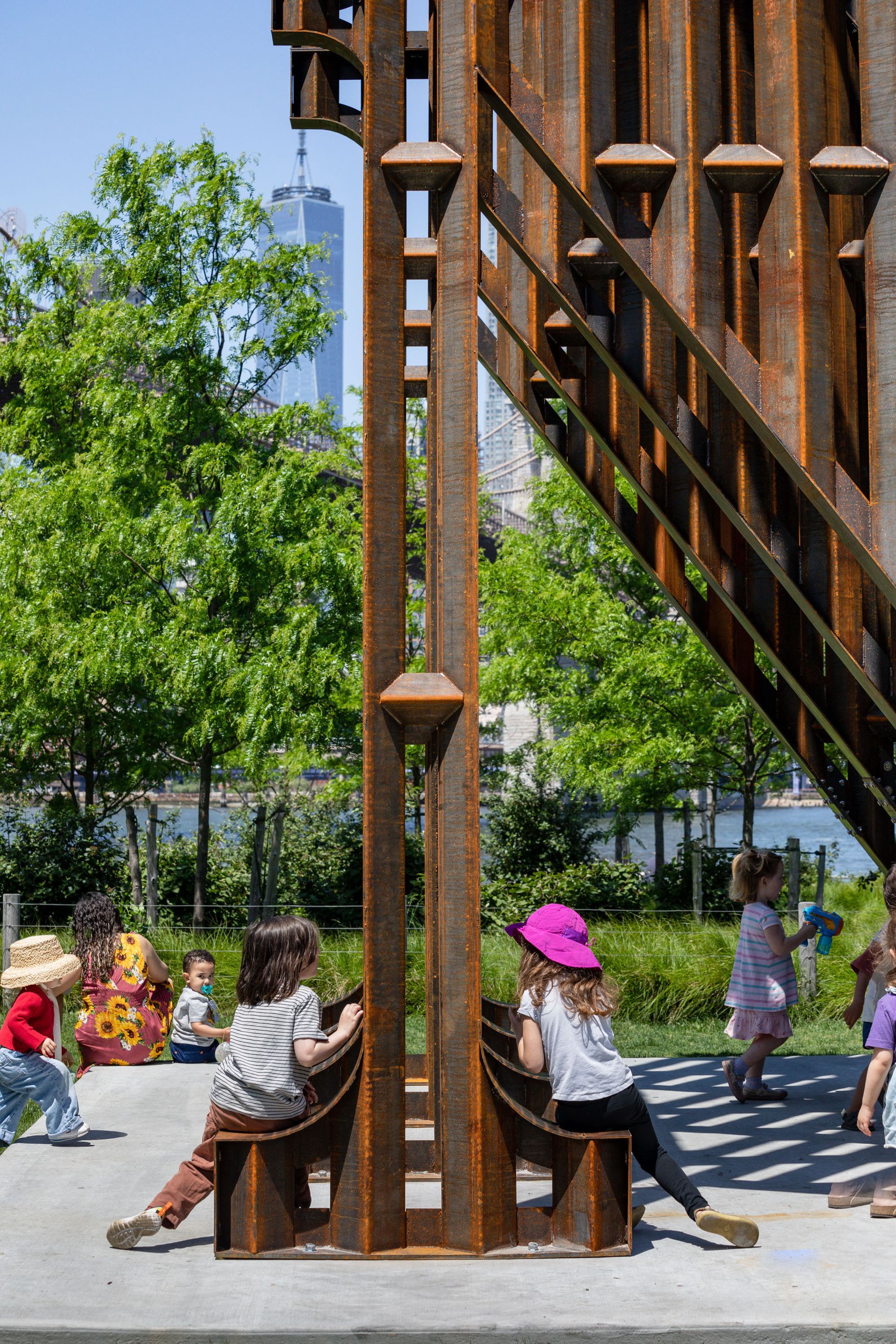Speaking from his home in Sitka, Alaska, Tlingit and Unangax artist Nicholas Galanin discussed his new public sculpture In every language there is Land / En cada lengua hay una Tierra (2023), a Public Art Fund project in Brooklyn Bridge Park, located overlooking Manhattan and the East River. Made from the exact steel used in the construction of the wall along the US-Mexico border – and with the same towering 30-foot height as the wall – he repurposed the material to spell the word “earth” in a way reminiscent of Robert Indiana. famous TO LIKE works.
The Art Newspaper: How did you come up with the title, In every language there is Land / En cada lengua hay una Tierra?
Nicolas Galanin: The work is about language and land, so specifically this title uses English and Spanish, the two colonial languages on either side of the US-Mexico border. The material for the work came directly from the construction of the border wall, so it would have been the wall if the material had not become this piece. There is only one company making the material for the border wall, and the steel that came from here was on its way to be part of it, but we were able to divert it for this project. With this, I look at how so many things are intentionally suppressed by colonialism: Indigenous peoples, Indigenous land and their relationship to it – and language.

Portrait of Nicolas Galanin
Photo: Merritt Johnson
Again, the linguistic reference of this understands that not only is this a physical history and space, but this type of colonialism and genocide takes many forms, and this is particularly experienced through our LANGUAGES. I come from a Tlingit and Unangax background, and I have ancestral lineage here in Southeast Alaska, and one of the biggest cultural battlegrounds is language. We still face this now, where there is a revitalization of language in relation not only to our culture and history, but also to places and place names. This work is in conversation with that.
I think about this hugely charged choice of material, and I know that this material, with all of its history and mythology, has often been so central to your work.
Yes, and so was the land and the history of the place. For me, several things come together in this work: the first is that there is a contrast in this work in reference to the work of Robert Indiana TO LIKE (1970) sculpture, which is more about Pop iconography than language or the idea of love. And I understand that there is also a history or a religious background in this work. So how far does this extend with the house? And when we talk about Indigenous histories and nationalism and colonial borders and violence, there’s a very clear distinction of who and for whom.

Nicolas Galanin, In every language there is Land / En cada lengua hay una Tierra2023 Courtesy of the artist and Peter Blum Gallery
Photo: Nicholas Knight, courtesy Public Art Fund, New York
Another big part of this conversation is the violence of national border walls and the root of that – whether it’s capitalism or other forms of government power – and what those walls ignore when they cross Indigenous lands or ways navigable waterways, and not just for humans but for those with whom we share the land, too.
Yes, I remember seeing videos of old cacti being cut down to make room for the wall. Thinking about language, the work is situated with a view of Manhattan, and Manhattan is of course an indigenous word.
Yes, the East Coast, especially in terms of the routes of settlement and the stories of that westward expansion – manifest destiny and all that. There’s still a lot of ongoing conversations and relationships going on as an extension of that, whether it’s current situations where we face these similarly enforced barriers and boundaries for specific communities, or we wait with impatient how this will change with the climate crisis and which communities will face the worst difficulties.

Nicolas Galanin, In every language there is Land / En cada lengua hay una Tierra2023 Courtesy of the artist and Peter Blum Gallery
Photo: Nicholas Knight, courtesy Public Art Fund, New York
Since it will be in a public space occupied by a wide variety of people – New Yorkers, domestic and international tourists, etc. – what do you think of the meaning of the work and of the word “earth” being so open to different interpretations?
Everyone has their own viewpoints when approaching these things, and I feel like a lot of my work reflects everyone’s perspective and how they may feel complicit or whatever their relationship to that. Especially in conversations around the earth in a place like New York today, and in conversations about migration and movement across lands and borders, these are conversations that extend far beyond the US-Mexico border. Everyone has stories and relationships with where they are and how they got there, and I hope this work will allow that to be heard, understood, and reflected upon.
- Nicolas Galanin: In every language there is a Land / En cada lengua hay una Tierra, until November 12, Brooklyn Bridge Park, Brooklyn
